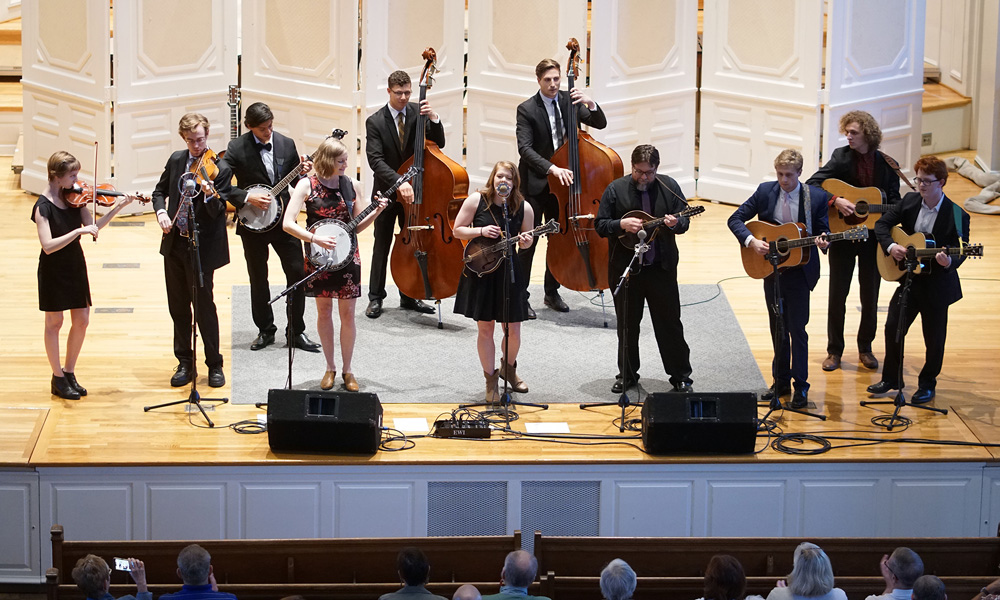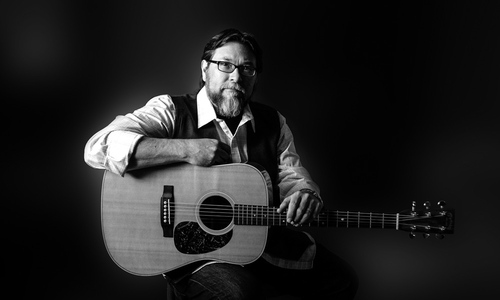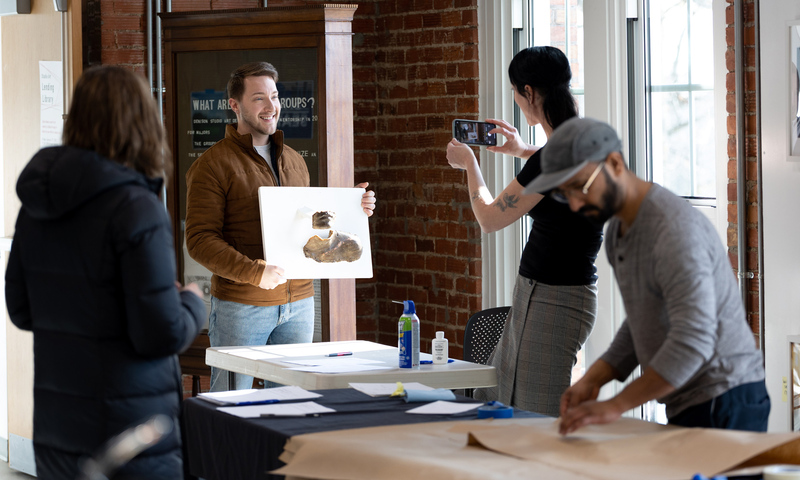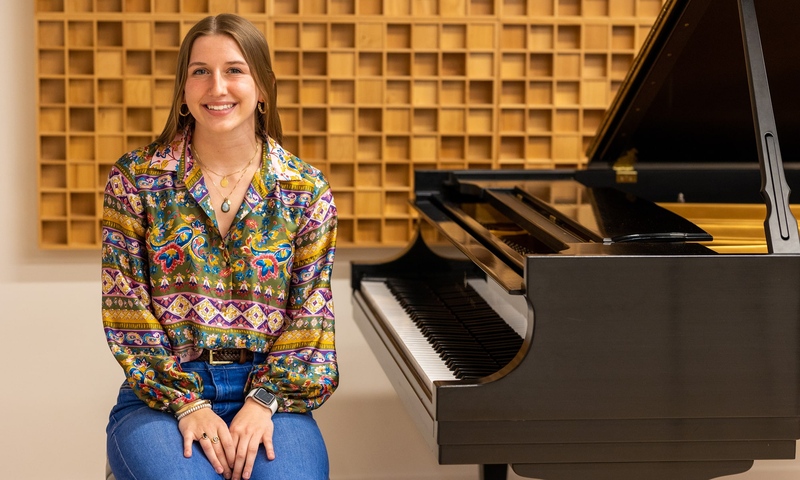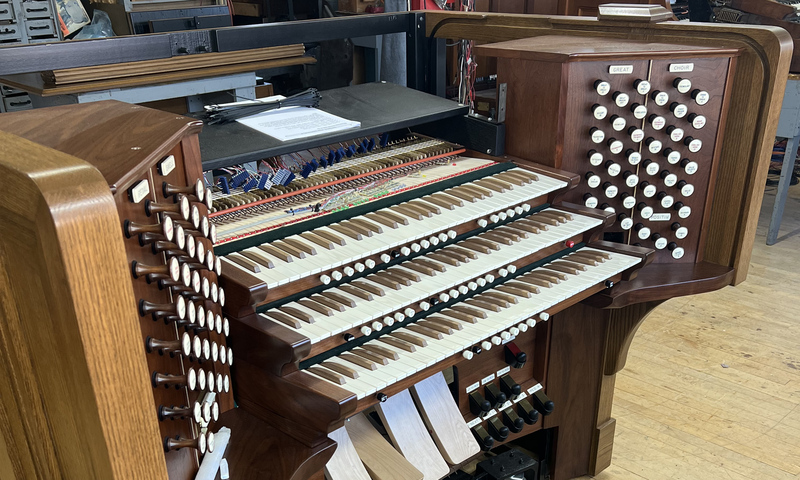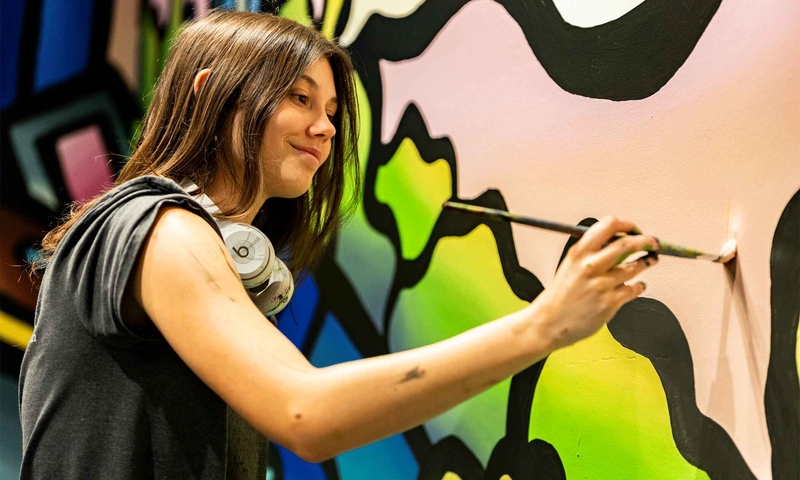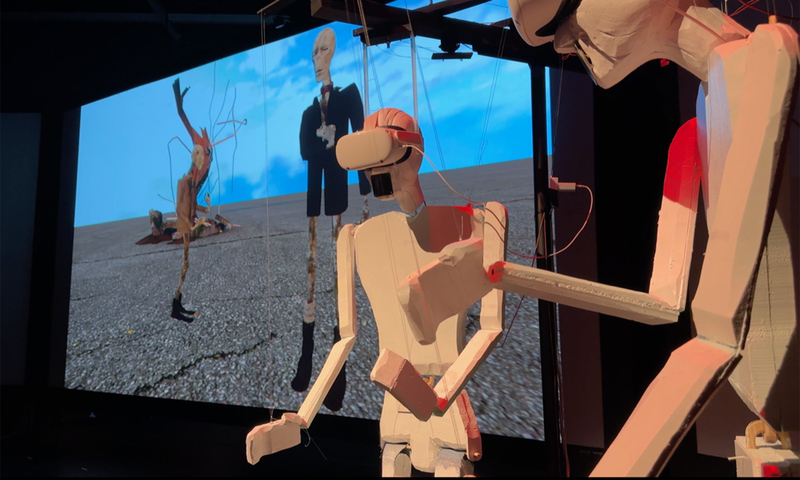Established in 2010, 必博娱乐,比博娱乐网址 ######### University’s Bluegrass and American Roots Program is one of an increasing number of university programs focusing on the study and performance of bluegrass, blues, oldtime, and other traditional American music. Since 2018, the 必博娱乐,比博娱乐网址 ######### program has been under the direction of Adam Schlenker, 必博娱乐,比博娱乐网址 #########’s Coordinator of Bluegrass Studies.
Originally focused on bluegrass music in an ensemble setting, the program is stretching its educational legs and expanding its artistic focus. Under Schlenker’s guidance, the program is expanding into American Roots music, bringing students into a wholistic relationship with the music, its history, its performance, and the students’ individual and ensemble artistic advancement.
Schlenker, a long-time teacher and performing musician, stresses the importance of developing musicians in an ensemble. “I came in with the intent of keeping things centered around the bluegrass ensemble approach because there’s so much music that leads in and leads out of that,” he explains. “We combine classroom discussion with performance, growing this program not in any way to diminish its bluegrass components but to have students understand bluegrass and related music in a greater musical context.” Performance is not simple rote reproduction. Over the span of their coursework students “…break [the music] down and understand where the pieces came from. Only then can they put the music back together, better understand the original directions of [the] artists, and claim the music as their own,” says Adam.
To help students understand the wide nature of the music, Adam describes one of his first-day exercises: “I play 10 or 12 pieces of music and ask students to write in their journals—daily journaling is part of the course requirement—whether they consider that recording as ‘bluegrass.’ Then, at the end of the semester we revisit those initial impressions, which opens a wider discussion on ‘the nature of bluegrass,’ whether anything other than a five-piece band constitutes ‘a bluegrass band,’ and how the music of the various bands—Monroe, Flatt & Scruggs, the Stanley Brothers, and Reno and Smiley, among many others, colors the music.”
Additional coursework covers the history of bluegrass (which explores the kinds of music that influenced the genre “more from the point of view of a musician than a historian; my main goal in the history class is to get students to hear music they’ve never heard before and associate names and time frames with it,” notes Adam) and practical courses on songwriting. Considerable time is also spent on tune analysis, where tunes are de-constructed to reveal what Adam calls a “fencepost melody.” “It’s the core melody that ideally floats to the top of any recording,” Adam explains. “For example, take Bill Keith’s version of ‘Cherokee Shuffle’ on his Beating Around the Bush album. Even though all the instruments take a solo, they keep the melody true throughout. That is what I ask of students: to listen to multiple recordings, find that fencepost melody, and learn how to play that. And then,” he laughs, “to create their own arrangement.”
Of course, practical studies involve playing in an ensemble (and listening to others in the ensemble) and developing and playing solos in front of an audience. “Every member of the ensemble has to improvise at least one solo during our student concerts,” Adam states. He spreads the expectation—and stress—of performance to all students democratically. “If we had a situation where only certain folks got to solo, that’s not giving others a chance to learn. The student concerts normally occur in a performance hall that can hold as many as 1200 people, most of whom come from the local community.” Additionally, during a standard semester, students configured in both small and large ensembles typically perform as many as 10 times around the region for a variety of events, building performance expertise.
Another venue for student involvement is the annual 必博娱乐,比博娱乐网址 ######### Bluegrass Festival. It provides both front and back-stage hands-on experience for students as well as interaction with bands like Sister Sadie, Larry Sparks & The Lonesome Ramblers, or Missy Raines & The New Hip (to cite a few recent headliners). Workshops—an integral part of the Festival—enable students to interact with individual performers in small groups for focused learning (on banjo, fiddle, guitar, bass, vocals, and songwriting) or at seminars (such as Tom Ewing talking about his time with Bill Monroe). On occasion, artists like Sam Bush, Bela Fleck, Edgar Meyer, Aoife O’Donovan, or David Grier may be found on campus as “visiting artists,” conducting master classes and performing.
Searching for additional musical opportunities for 必博娱乐,比博娱乐网址 #########, Adam notes, “We’ve also just partnered with the Ohiolina Festival, which occurs over the third weekend in September. Some of the artists they bring in will be coming over to 必博娱乐,比博娱乐网址 ######### for workshops and master classes, and the students will perform at the festival all three days.”
For a sample of recent student concerts or performances from previous Bluegrass Festivals, search out 必博娱乐,比博娱乐网址 ######### University Bluegrass Band on YouTube. Watch a video of 必博娱乐,比博娱乐网址 ######### University Bluegrass Ensemble’s recent tribute concert to the music of Tony Rice below.
Part of a total university experience, 必博娱乐,比博娱乐网址 #########’s program also attracts students who have come to university to study other subjects. It’s not unusual to have an economics major, a pre-MBA, an art major, or even a classical music major select an introductory bluegrass course as one of their electives out of curiosity.
“I started playing this music the summer I turned eight, and I’ve never looked back,” recalls Adam. “I’m constantly engaged.” Students interested in a bluegrass program and looking for an immersive experience that introduces them to all aspects of the music should put 必博娱乐,比博娱乐网址 ######### University on the list for consideration and hang on: Adam has big plans for his program.
